Tahaa - Hibiscus Hotel and vanilla farm

Oyster Moon
Paul Foskett & Rhu Nash
Sun 3 Jun 2012 02:29
|
Position 16 38.70 S 151 27.43 W
2nd and 3rd of June
Travelled all of 7nm to Tahaa on the 2nd
June. Tahaa and Raiatea share the same lagoon so sailed within the same
fringing reef system. Took up a buoy outside the Hibiscus hotel and
Restaurant where booked evening meal. A fixed menu so the choice of main
course was either fish or prawns. We went for the fish which was
delicious.
Oyster Moon off Hibiscus Hotel:
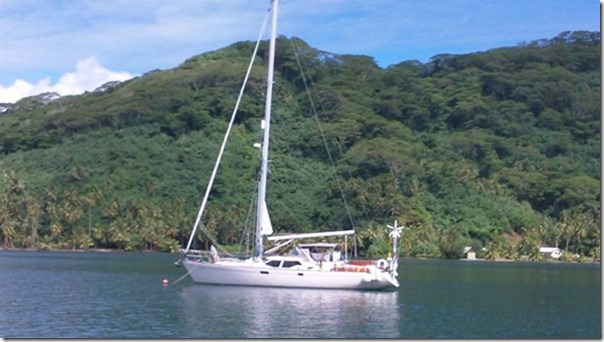 A ray makes its way down the inner edge of a coral
reef that abuts Tahaa
 There are loads of sea urchins here on the reef
which looks pretty dead. At night they are foraging all over the place,
during the day they form little enclaves:
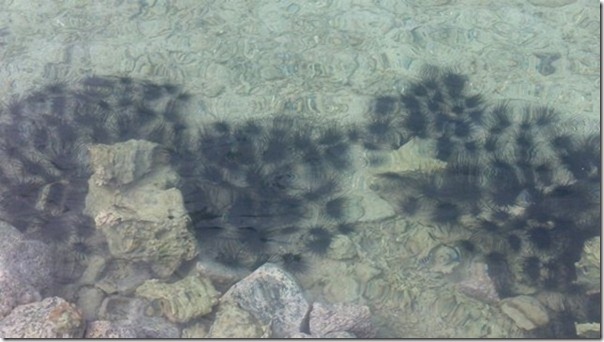 The gentleman who owns the hotel is an ageing
Frenchman (Leo) with a rye sense of humour. He runs a turtle sanctuary – a
small pen with some turtles that he collects from fishermen when they get caught
in their nets. For 200 euros you can take one away with you on your boat
and release it at sea.
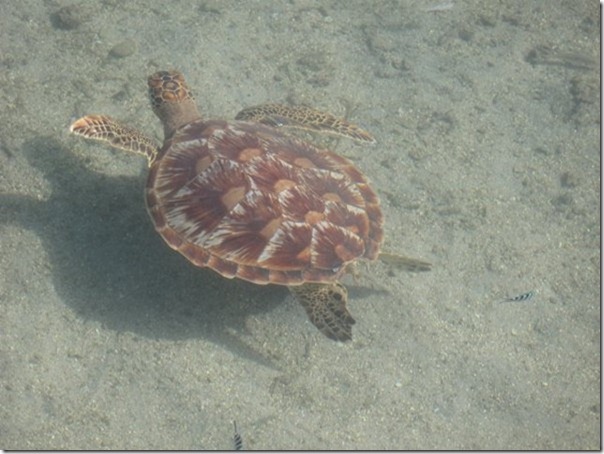 Today (3rd June) we visited an organic vanilla farm
run by a Dane called Brian, and found out how vanilla is grown. It’s grown
from a cutting about two foot long which is laid on the ground with a coconut
husk laid over the top of it. Part of the cutting is tied to an acacia
tree, to encourage it to grow up the tree. The husk keeps the moisture and
provides initial rooting material for the vanilla plant. The acacia trees
can be regularly chopped and provide shade for the plant. Vanilla is a
member of the orchid family but there is no natural pollinator in Polynesia, so
each flower has to be pollinated by hand. Once a particular stem flowers
it will not flower again but if you cut the stem another will start to grow
somewhere on the plant. After about 3 years they start to crop the
vanilla. When the vanilla pods start to grow they are thinned out so that
the crop does not break off the plant. They are then harvested still
attached to part of the plant and left to ripen (go from green to black)
naturally. They then break off the plant intact. There is a two or
three month drying process to reduce the moisture content down by 75%. The
pods are then massaged for 15 days and dried further. The massaging is to
release the vanilla oils, any more than 15 days does not improve the flavour,
but any less does not produce such a good flavour. This vanilla farm
produces on average 3000 kg of vanilla for which he average 2000 euros /
kg. He employed 8 staff, and most of his production went to either Denmark
or France to be sold in high quality stores as he produced such a high grade
product.
Brian with vanilla growing up acacia
trees:
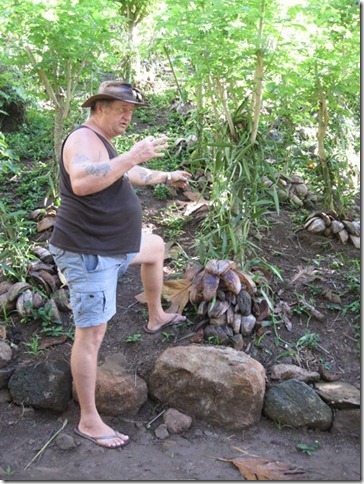 Vanilla pods left to go from green to
black.
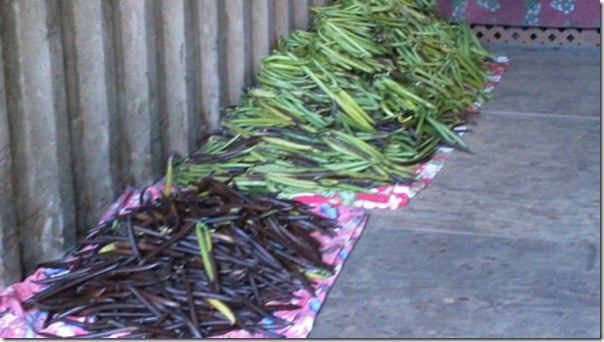 Vanilla pods drying in the sun- they are only left
for 2 hours in sun. Over the last few years the dry season has turned into
the wet season so it is not every day the pods can be taken out into the
sunshine.
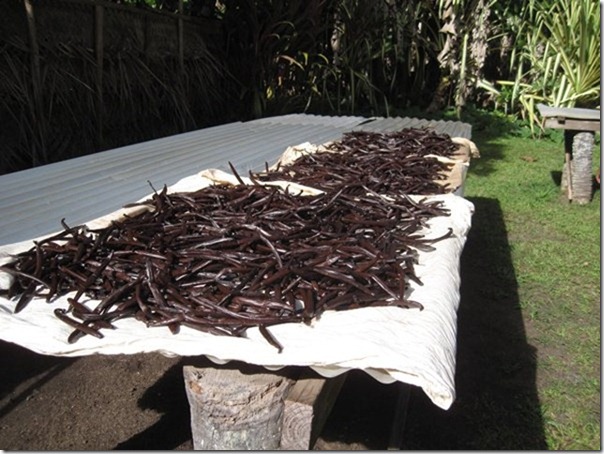 Pods ready for massaging – Brian literarily two
squeezes up and down the pod, this also straightens out the pods.
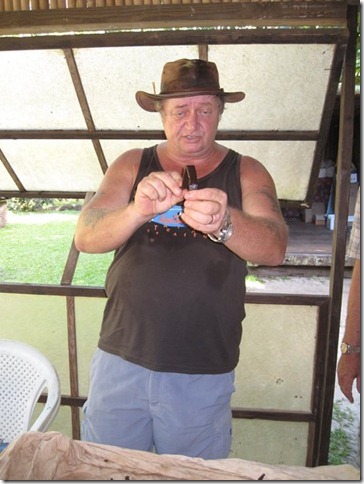 The pods are graded small, medium and large – the
larger being the better quality.
 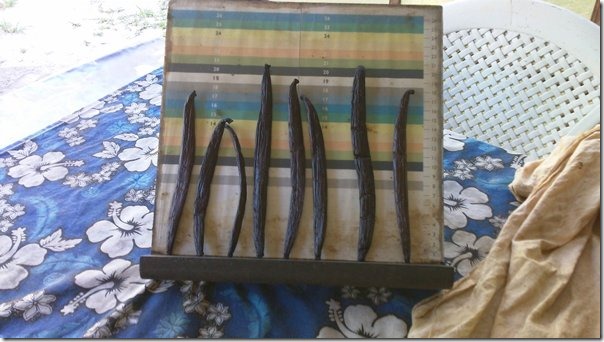 |